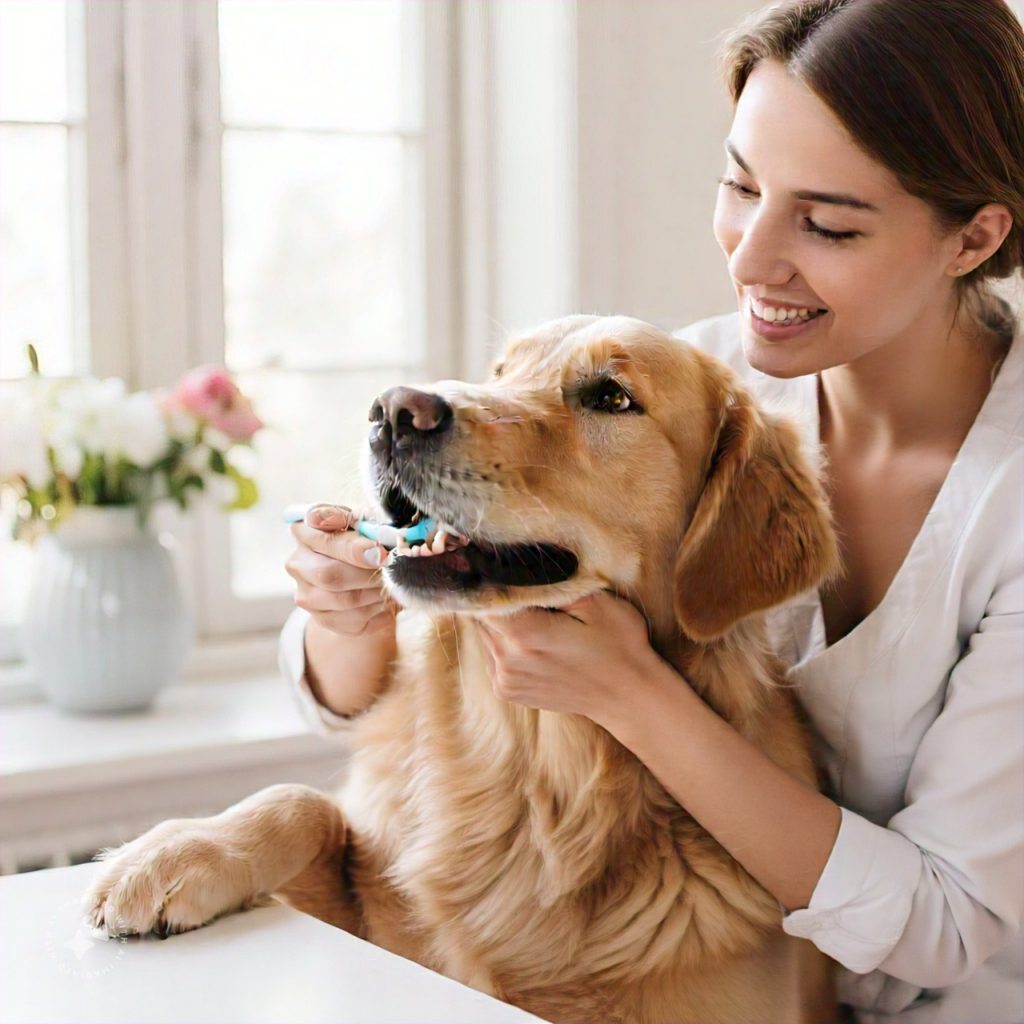Good oral hygiene is essential for your dog’s overall health. Regular tooth brushing can prevent gum disease, tooth decay, and bad breath while also improving your pet’s quality of life. While the idea of brushing your dog’s teeth might feel daunting, it’s easier than you think with the right approach and tools. This comprehensive guide provides an in-depth breakdown of how to brush your dog’s teeth effectively.
Why Is Brushing Your Dog’s Teeth Important?
- Prevents Dental Diseases: Plaque buildup leads to tartar, which can cause gingivitis and advanced periodontal disease.
- Improves Overall Health: Oral bacteria can enter the bloodstream, potentially affecting the heart, liver, and kidneys.
- Freshens Breath: Regular brushing keeps your dog’s breath smelling clean.
- Saves Money: Preventative care reduces the need for expensive professional dental treatments.
What You Need to Brush Your Dog’s Teeth
1. Dog-Specific Toothbrush
Choose a toothbrush designed for pets. Options include:
- Long-handled brushes for hard-to-reach areas.
- Finger brushes for more control.
2. Dog-Safe Toothpaste
Never use human toothpaste, as it contains xylitol, which is toxic to dogs. Look for pet-friendly toothpaste in flavors like chicken, peanut butter, or beef to make brushing enjoyable.
3. Optional Supplies
- Dental wipes for sensitive dogs.
- Treats or toys as rewards.
Step-by-Step Guide to Brushing Your Dog’s Teeth
Step 1: Prepare Your Supplies
Ensure you have the toothbrush, toothpaste, and treats ready. Choose a quiet, well-lit area to minimize distractions.
Step 2: Familiarize Your Dog with the Process
If your dog is new to tooth brushing, start slowly to build trust.
- Let them sniff and lick the toothpaste to get accustomed to its flavor.
- Gently touch their mouth and teeth to make them comfortable with handling.
Step 3: Position Your Dog Comfortably
Find a position that works for both you and your dog. For small dogs, placing them on your lap may help. Larger dogs can sit or lie down on the floor.
Step 4: Begin Brushing
- Lift the Lips: Use one hand to gently lift your dog’s lips, exposing their teeth.
- Brush in Small Circles: Start with the upper teeth, brushing in small, circular motions. Focus on the outer surfaces where plaque accumulates.
- Work Gradually: Brush a few teeth at a time, gradually increasing coverage as your dog becomes more comfortable.
Step 5: Reward Your Dog
After each session, praise your dog and give them a treat or toy. Positive reinforcement helps them associate brushing with a pleasant experience.
Tips for Success
- Start Early: Introduce brushing during puppyhood to establish a routine.
- Go Slow: If your dog is resistant, begin with short sessions and work up to a full brushing.
- Stay Calm: Your attitude influences your dog’s behavior. Be patient and relaxed.
- Be Consistent: Brush daily or at least 3-4 times a week for best results.
Common Challenges and How to Overcome Them
1. Resistance to Brushing
- Use a finger brush or dental wipes as a starting point.
- Choose toothpaste flavors your dog loves.
2. Fear of the Toothbrush
- Let your dog see and sniff the toothbrush before using it.
- Reward calm behavior during introductions.
3. Sensitivity Around the Mouth
- Gradually increase handling time around your dog’s mouth.
- Practice opening their mouth gently without brushing at first.
Alternative Dental Care Options
While tooth brushing is the most effective method, additional dental care options can support oral health:
- Dental Chews: Help reduce plaque while satisfying your dog’s natural chewing instincts.
- Water Additives: Fight bacteria and freshen breath when added to your dog’s water bowl.
- Professional Cleanings: Annual dental exams and cleanings by your veterinarian are essential.
Signs Your Dog Needs Dental Attention
Even with regular brushing, it’s important to monitor your dog’s oral health. Look for:
- Persistent bad breath.
- Red, swollen, or bleeding gums.
- Yellow or brown tartar buildup.
- Loose or broken teeth.
- Difficulty eating or excessive drooling.
If you notice any of these signs, consult your veterinarian immediately.
Benefits of a Brushing Routine
- Stronger Bond with Your Dog: Tooth brushing can become a positive bonding experience.
- Improved Oral Hygiene: Regular care reduces the risk of dental diseases.
- Cost Savings: Preventative care minimizes the need for expensive dental procedures.
Conclusion
Brushing your dog’s teeth is a simple, effective way to ensure their oral and overall health. With the right tools, techniques, and a little patience, you can establish a routine that keeps your dog’s teeth clean and healthy.
Start today and give your furry friend the gift of a healthy, happy smile!

